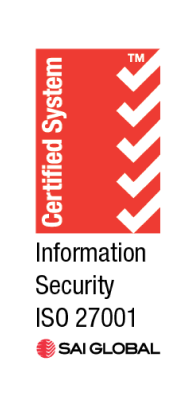Cloud operating models vary by industry, organization size, structure and technology adoption profiles. However, successful models will almost always contain a cloud enterprise architecture or EA function, such as a cloud centre of excellence that leads cloud adoption, as well as a cloud computing advisory council for cloud strategy and policy feedback, and a cloud community of practice for engagement and knowledge sharing.
Infrastructure and operations or I&O leaders are responsible for planning the successful execution of their organization’s cloud strategies. A cloud centre of excellence, or CCOE, is an effective practice for facilitating and scaling successful cloud adoption in organizations of all sizes and types, regardless of the organization’s cloud strategy.
The ideal CCOE is a business-outcome-driven EA function that provides cloud governance, offers cloud brokerage capabilities and leads the transformation activities that are necessary for a successful cloud journey. I&O leaders can drive transformation by ensuring the CCOE works collaboratively with cloud computing stakeholders across the organization via a CCAC that has oversight of cloud strategy and policy and through a cloud community of practice, or CoP, that shares best practices and lessons learned, builds a cloud knowledge base within the organisation and creates the foundation of cloud-related talent development.
What is a cloud center of excellence?
There are three core pillars of a CCOE:
- Governance: The CCOE leads and governs the adoption of cloud computing so that the organization adopts good practices and manages risks appropriately.
- Brokerage: The CCOE helps to match business needs with high-quality cloud solutions and strives to maximize the business value of cloud computing.
- Transformation: The CCOE drives change leadership around cloud computing and facilitates the spread of cloud expertise throughout the organization.
CCOE functions are typically made up of fewer than a dozen people. A CCOE may at first consist of only one cloud architect who is usually attached to the enterprise architecture team. The CCOE is a key strategic function that should not be outsourced, but if the organization does not have enough skilled cloud architects to perform CCOE functions, external resources can be used for staff augmentation. The CCOE leader should be a long-term employee, such as a lead enterprise architect, but if they lack the necessary cloud skills, they are sometimes paired with an external consultant who can provide advice and technical expertise.
Ensure the CCOE is tasked with overseeing and maturing cloud computing adoption. The CCOE should provide governance via guidelines and guardrails, offer consultative capabilities to business stakeholders seeking the best cloud solutions for their business needs, and guide the transformation in processes and skills necessary to successfully optimize cloud value.
The key functions of cloud operating models
There are four key functions that I&O leaders must link into the cloud operating model: sourcing, procurement, vendor management, information technology finance, learning and development, and the project management office. The CCOE is responsible for gaining alignment and support from these functions and leading the establishment of cross-functional processes where necessary. These functions typically do not have teams dedicated to cloud-related matters, although there may be individuals within each team that have more cloud experience and expertise and, therefore, perform more cloud-related work.
The Cloud Computing Advisory Council, or CCAC, plays a crucial role within cloud operating models. The CCAC serves as a cloud steering committee that provides input on cloud strategy and policy.
Most CCACs begin as cloud strategy councils and evolve over time. The CCAC is an advisory body to the CCOE, providing feedback on cloud computing strategy, policy, needs and impacts. It is responsible for helping to shape and enforce cloud-related policies and assists in driving organizational transformation.
The CCAC is made of representatives from central IT, business unit IT, business leadership and administrative functions such as HR, legal and finance. These representatives are appointed by different functions within the organization. CCAC responsibilities represent only a small addition to the job roles of its members, and its work is usually done asynchronously via email or a collaboration system.
The importance of a cloud community of practice
A CoP is an employee-led effort where members connected by exposure to a common interest or concern proactively look for ways to better themselves and others. The cloud CoP is key to driving cross-functional and cross-business collaboration around cloud adoption. It is the place to share best practices and lessons learned and a way of building a cloud knowledge base within the organization.
The cloud CoP is not a working committee and should not be confused with a centre of excellence. Cloud CoP members are typically volunteers seeking to learn, share knowledge and network with others involved in implementing cloud computing within the organization.
Initially, the cloud CoP is led by a cloud architect, and participation may be formally required to generate momentum for the community. Over time, it should transition to volunteer leadership and participation.
I&O leaders should encourage the flexible evolution of the cloud operating model as the organization matures on its cloud journey. Establish a CCOE with an executive mandate and well-defined role. Appoint an enterprise architect as the organization’s chief cloud architect and assign that person to lead the CCOE. Work collaboratively with cloud computing stakeholders across the organization via a cloud strategy or CCAC. Lead the drive for transformation across the organization through one or more CoPs.





